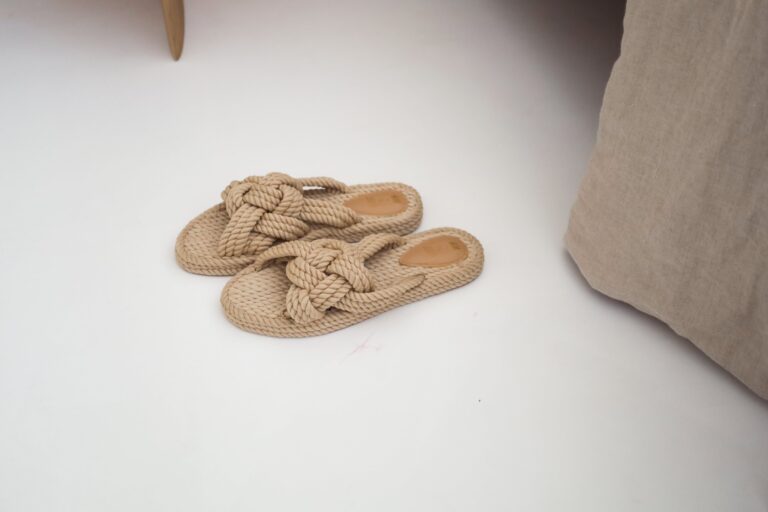How to Attach Heel Lifts to Sandals: A Complete Guide
Are you someone who requires the additional support and comfort of heel lifts but loves wearing sandals during the summer months? If so, you may have wondered if it’s possible to attach heel lifts to your favorite pair of sandals. The good news is that it is indeed possible! In this comprehensive guide, we will explore various methods and techniques on How to Attach Heel Lifts to Sandals, allowing you to enjoy the benefits of both height correction and summer footwear. So let’s dive in and discover how you can elevate your sandal game while maintaining comfort and stability.
Heel Lifts and Their Benefits | How to Attach Heel Lifts to Sandals
Before we delve into the specifics of attaching heel lifts to sandals, let’s first understand what heel lifts are and why they are beneficial. Heel lifts, also known as shoe lifts or height inserts, are small pieces of foam or other materials that are placed under the heel of the foot to provide additional height. They are commonly used to address leg length discrepancies, correct posture, and alleviate discomfort caused by conditions such as plantar fasciitis or Achilles tendonitis.

Heel lifts offer numerous advantages, including improved alignment of the hips, reduced strain on the lower back, enhanced shock absorption, and increased overall comfort while walking or standing. By using heel lifts, you can achieve better balance, alleviate pain, and optimize your gait.
Read More: How Much Does a Crow Boot Cost
Choosing the Right Heel Lift for Sandals
When it comes to selecting the appropriate heel lift for your sandals, there are a few factors to consider. First and foremost, ensure that the heel lift is compatible with the style and design of your sandals. Ideally, opt for a transparent or flesh-colored heel lift that blends seamlessly with the sandal’s aesthetics, making it less noticeable to others.
Additionally, consider the height of the heel lift. Heel lifts come in various thicknesses, ranging from a few millimeters to a couple of inches. Select a height that suits your comfort level and addresses your specific needs, such as correcting a leg length discrepancy or providing additional support for a particular condition.
Method 1: Stapling or Tacking the Heel Lift
One common method for attaching heel lifts to sandals is by using staples or tacks. This method is particularly effective for closed-heel sandals or those with a solid back. Here’s a step-by-step guide on how to staple or tack a heel lift to your sandals:
- Measure the height of the heel on your sandal to determine the size of the heel lift you need.
- Cut a piece of the heel lift material to match the height measurement.
- Remove the top few layers of the Clearly Adjustable lift to avoid feeling the staple or tack under your heel.
- Position the heel lift at the back of the sandal’s heel.
- Secure the heel lift in place by stapling or tacking it to the sandal. Use heavy-duty staples or tacks to ensure durability.
- Replace the top layers of the Clearly Adjustable lift to isolate your heel from the staple or nail heads.
- Repeat the process for the other sandal if necessary.
If you’re unsure about performing this installation yourself, don’t hesitate to seek assistance from a local shoe repair shop. They can quickly and efficiently attach the heel lift to your sandals.
Method 2: Using Double-Faced Tape
Another method for attaching heel lifts to sandals is by using double-faced tape. This method is suitable for sandals with open backs or strappy designs. Follow these steps to securely attach the heel lift using double-faced tape:
Related: How to Stretch UGG Boots
- Measure the height of the sandal’s heel and cut the heel lift material to match the measurement.
- Ensure that the double-faced tape you’re using is compatible with the vinyl material of the heel lift to prevent slippage or damage.
- Apply a strip of double-faced tape to the back of the heel lift.
- Position the heel lift on the sandal, ensuring it aligns with the heel area.
- Press the heel lift firmly onto the sandal, making sure it adheres securely.
- Repeat the process for the other sandal if needed.
When using double-faced tape, it’s essential to periodically check the adhesion to ensure the heel lift remains securely in place during wear. If necessary, replace the tape to maintain optimal attachment.
Exploring Alternative Methods
While stapling/tacking and using double-faced tape are two commonly used methods, there are alternative approaches to attaching heel lifts to sandals. Depending on the design of your sandals and your personal preferences, you may consider the following options:
- Velcro Straps: Attach a Velcro strap to the heel lift and the sandal to ensure a secure fit.
- Shoe Glue: Use shoe glue to adhere the heel lift to the sandal. Ensure the glue is compatible with both the materials of the sandal and the heel lift.
- Shoe Inserts: If your sandals have removable insoles, consider using shoe inserts with built-in heel lifts.
When exploring these alternative methods, always prioritize comfort and stability. Choose an attachment method that allows you to walk and move naturally without compromising the integrity of the sandal or the heel lift.
Tips for Optimal Comfort and Stability
Once you have successfully attached the heel lifts to your sandals, it’s important to keep a few tips in mind to ensure optimal comfort and stability:
- Proper Sizing: Ensure that the heel lift is the correct size for your foot and matches the sandal’s heel height.
- Secure Attachment: Regularly check the attachment method you used (e.g., staples, tape) to ensure it remains secure during wear.
- Foot Alignment: Pay attention to how your foot aligns with the heel lift and adjust if necessary to maintain proper posture and gait.
- Proper Sandal Fit: Make sure your sandals fit properly and provide adequate support for the rest of your foot to complement the heel lift’s benefits.
Remember, it may take some time to adjust to wearing heel lifts with sandals. Start by wearing them for shorter periods and gradually increase the duration as you become more comfortable.
Frequently Asked Questions
Can I use heel lifts with any type of sandal?
Are there any specific heel lift brands recommended for sandal use?
Can I remove the heel lift from my sandals if needed?
Are heel lifts only beneficial for leg length discrepancies?
Conclusion
Attaching heel lifts to sandals opens up a world of possibilities for those who require height correction but don’t want to sacrifice their summer footwear. By following the methods outlined in this guide and considering alternative attachment options, you can enjoy the benefits of heel lifts while staying stylish and comfortable in your sandals. Remember to prioritize comfort, stability, and proper alignment when attaching and wearing heel lifts with sandals.







